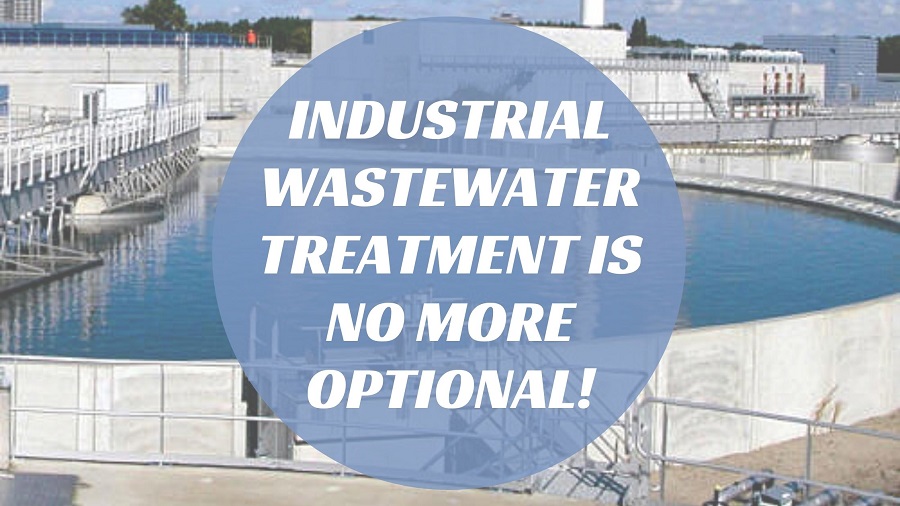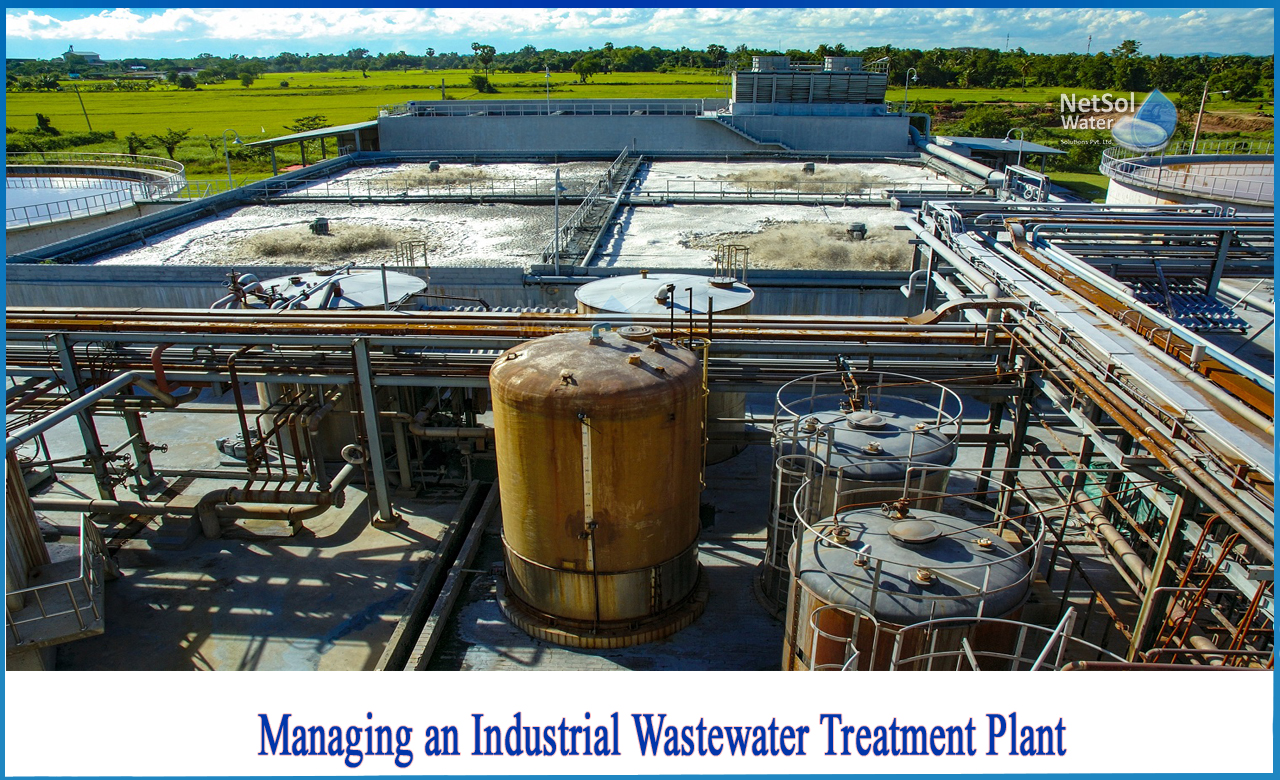Industrial Waste Water Treatment-- Industrial-Grade Water Purification and Purification Solutions
Industrial Waste Water Treatment-- Industrial-Grade Water Purification and Purification Solutions
Blog Article
Trick Strategies in Industrial Waste Water Therapy Processes
The treatment of industrial wastewater is a critical element of ecological administration, entailing an array of techniques designed to mitigate the effect of impurities. Innovations in technologies such as membrane filtration and advanced oxidation processes offer innovative remedies for boosting treatment effectiveness.
Physical Treatment Methods
Just how successfully can physical treatment methods attend to the intricacies of industrial wastewater? Physical treatment techniques play an essential role in the initial stages of wastewater administration, concentrating mainly on the removal of solids and huge particulates. Methods such as flotation, filtering, and sedimentation are necessary for lowering the concentration of suspended solids, therefore improving the efficiency of succeeding therapy processes.
Sedimentation entails the gravitational settling of solids, permitting for the separation of much heavier materials from the wastewater. This technique is specifically efficient in clearing up water prior to chemical or organic therapies. Purification, on the other hand, makes use of numerous media to capture particle matter, making certain that smaller sized pollutants are eliminated. This technique can be customized to accommodate various types of commercial effluents, creating clearer effluent streams.
In addition, flotation protection approaches, which make use of air bubbles to raise suspended solids to the surface for elimination, work in dealing with wastewater with high focus of fats, oils, and oils. In general, physical treatment techniques function as a crucial initial action in the thorough management of commercial wastewater, guaranteeing that the load on succeeding treatment phases is minimized and boosting general therapy effectiveness.
Chemical Treatment Strategies
While physical therapy techniques prepared for efficient wastewater administration, chemical treatment strategies are necessary for attending to the extra intricate pollutants typically discovered in commercial effluents. These techniques make use of various chemical representatives to speed up, counteract, or oxidize dangerous substances, making certain a more complete removal of contaminants.
One usual approach is coagulation and flocculation, where chemical coagulants such as light weight aluminum sulfate or ferric chloride are included in advertise the gathering of suspended bits. This procedure improves solid-liquid separation, decreasing turbidity and improving water quality. Additionally, neutralization processes are utilized to change the pH of wastewater, using bases or acids to neutralize acidic or alkaline streams, respectively.
Oxidation-reduction responses play an essential function in degrading natural impurities and pathogens. Chemical oxidants like hydrogen, ozone, or chlorine peroxide are used to damage down complex organic compounds, making them less dangerous or much more eco-friendly. Progressed oxidation processes (AOPs) incorporate several oxidation techniques to improve toxin elimination effectiveness.
Organic Therapy Processes
The efficiency of wastewater therapy is dramatically boosted by biological therapy processes, which harness the all-natural metabolic tasks of microbes to decay organic issue and remove contaminants. Industrial Waste Water Treatment. These procedures mainly include anaerobic and cardio digestion, each tailored for particular sorts of wastewater
Aerobic treatment procedures use oxygen to support microbial growth, promoting the failure of natural pollutants into carbon dioxide and water. Usual approaches consist of activated sludge systems, where aeration storage tanks help with the mixing of wastewater with microorganisms, and trickling filters, which encourage biofilm advancement on media surfaces.
On the other hand, anaerobic therapy procedures click here for info occur in the absence of oxygen, making use of anaerobic microorganisms to decompose natural issue, resulting in biogas manufacturing, a renewable resource source. Anaerobic digesters are typically used in commercial setups for this purpose, successfully reducing the quantity of sludge while creating valuable biogas.
The selection of a biological treatment method relies on wastewater features, therapy goals, and governing standards. The integration of biological procedures in wastewater treatment not only improves contaminant removal performance yet additionally promotes sustainability by lessening chemical usage and sustaining resource recovery.
Advanced Oxidation Processes

Typical AOP strategies consist of Fenton's ozonation, photocatalysis, and reagent. Fenton's reagent, a combination of hydrogen peroxide and ferrous iron, catalyzes the development of hydroxyl radicals, making it efficient for treating wastewater having phenolic substances and other stubborn materials.
AOPs use a number of advantages, consisting of minimized sludge manufacturing and the capacity to treat wastewater with high focus of organic toxins. However, the implementation of AOPs needs careful factor to consider of operational criteria and cost-effectiveness, making certain that these advanced methods are properly integrated into existing wastewater treatment systems.
Membrane Filtering Technologies

Microfiltration is reliable for getting rid of put on hold microorganisms and solids, while ultrafiltration targets smaller organic molecules and viruses. Nanofiltration bridges the gap in between ultrafiltration and reverse osmosis, successfully getting rid of natural compounds and divalent ions. Reverse osmosis supplies the highest degree of filtration, used largely for desalination and eliminating mono-valent ions.
Membrane innovations supply many benefits, including reduced power great site usage contrasted to conventional therapy techniques, modular layout for scalability, and the possibility for water recovery and reuse. Nonetheless, challenges such as membrane layer fouling and the need for normal upkeep should be dealt with to make sure system effectiveness. Generally, membrane layer purification modern technologies stand for an important component of modern industrial wastewater treatment approaches, advertising sustainability and resource preservation in water administration.
Verdict
In verdict, commercial wastewater therapy uses a diverse variety of methods, including physical, chemical, biological, and progressed approaches. Each technique plays a crucial function in properly Check Out Your URL dealing with different impurities, improving water high quality, and promoting source sustainability. The combination of these methods fosters a detailed therapy approach, guaranteeing that commercial effluents fulfill regulative criteria while lessening ecological impact. Proceeded developments in these methodologies will certainly further enhance the efficiency and performance of wastewater treatment processes in industrial setups.
The therapy of industrial wastewater is a critical facet of ecological management, involving a variety of methods developed to alleviate the impact of impurities.How efficiently can physical treatment methods resolve the complexities of commercial wastewater?Advanced oxidation processes (AOPs) represent an advanced technique in commercial wastewater therapy, created to efficiently break down organic contaminants that are commonly immune to conventional treatment methods (Industrial Waste Water Treatment).In final thought, commercial wastewater therapy employs a varied array of techniques, consisting of physical, chemical, biological, and advanced approaches. Continued innovations in these methodologies will further boost the performance and performance of wastewater therapy procedures in industrial setups
Report this page